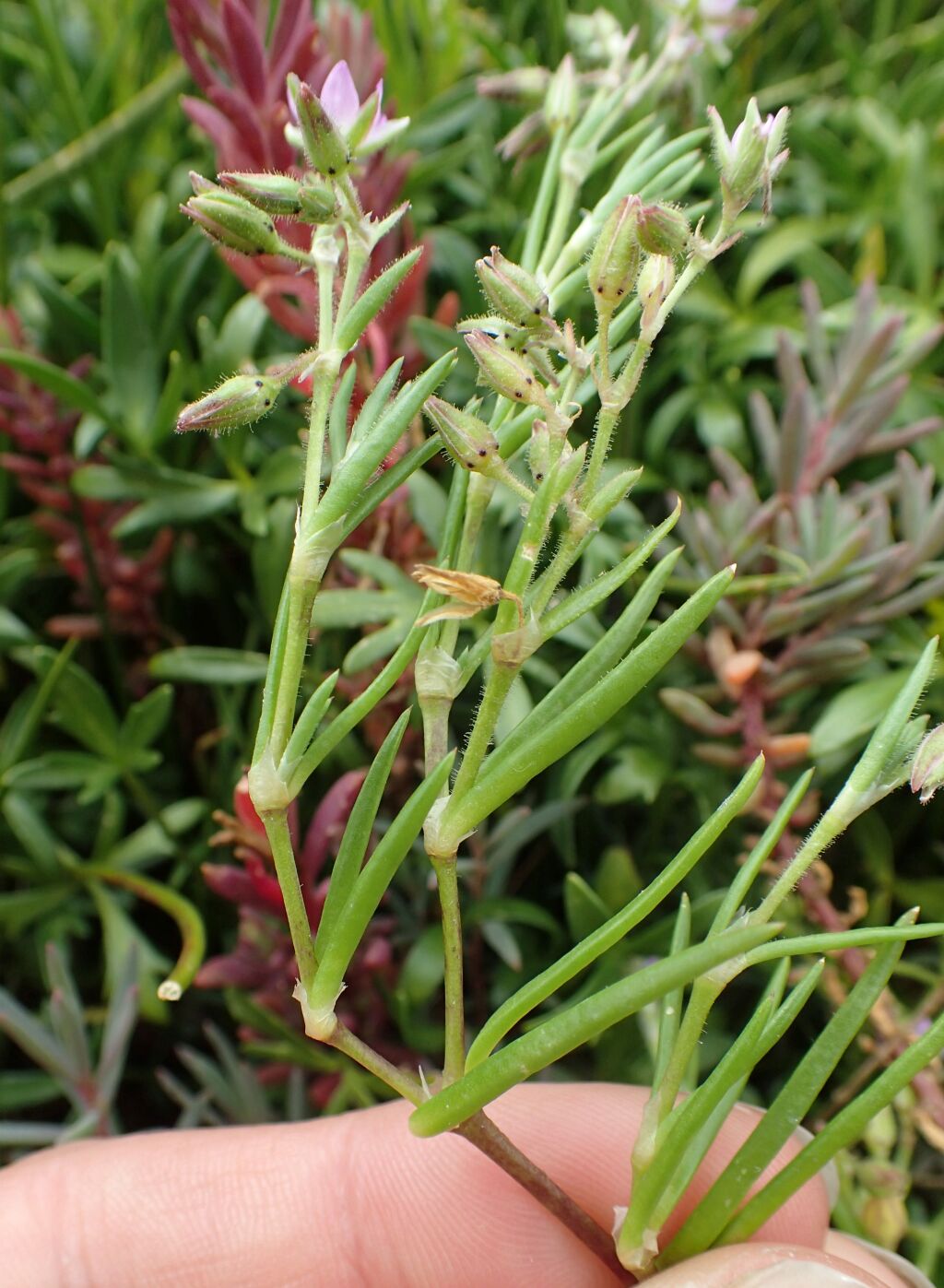Spergularia marina
(L.) Griseb. Lesser Sea-spurreyAnnual or rarely perennial; taproot slender to slightly fleshy; stems slender, diffuse, 5–35 cm long. Leaves linear, obtuse to mucronulate, hardly fasciculate, fleshy, 5–50 mm long, 0.6–1.5 mm wide, glabrous or glandular-hairy; stipules obtuse to scarely acuminate, (2–)2.5–3(–4) mm long, connate for c. one-third to half their length, not silvery. Inflorescence dense or occasionally lax, dichasial, upper branches becoming monochasial and appearing racemose; pedicels reflexed or not, filiform, c. equalling to longer than sepals, glabrous or glandular-hairy. Flowers 4–8 mm diam.; sepals (1.5–)2.5–4(–5) mm long, green or purplish with basal dots usually prominently blackish-red, with sparse to dense glandular hairs (0.15–)0.2–0.3(–0.4) mm long; petals sometimes reduced or 0, usually shorter than sepals, rose-purple, white at base; stamens (0–)2–5(–10), staminodes 0–3. Capsules narrow-ovoid, usually shortly exceeding sepals; seeds with thickened rim, (0.35–)0.6–0.8 (–0.9) mm long, smooth to densely translucent-papillose, orange-brown to deep red-brown, usually unwinged, or unwinged and winged in same capsule, the wing margin erose-denticulate. Flowers most of year.
LoM, MuM, Wim, Brid, VVP, VRiv, MSB, RobP, MuF, GipP, OtP, WaP, Gold, CVU, DunT, WPro, HNF. All States. New Zealand. Mostly on maritime cliffs, margins of saltmarshes and inland saline wetlands.
Like Spergularia tasmanica, this plant is widespread in natural, saline wetland habitats and may be reasonably considered native.
Adams, L.G.; West, J.G. (1996). Spergularia. In: Walsh, N.G.; Entwisle, T.J., Flora of Victoria Vol. 3, Dicotyledons Winteraceae to Myrtaceae, pp. 257–262. Inkata Press, Melbourne.
 Spinning
Spinning




